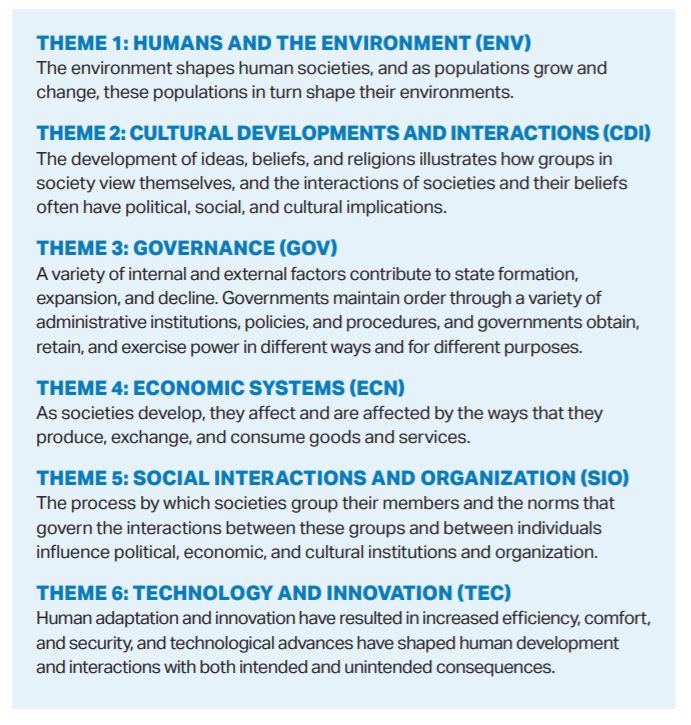Helpful LinksRecommend Purchases:
Pre-2019 Key Concepts for AP World |
Course Overview:
AP World History is a challenging two semester course that is structured around the investigation of selected themes woven into key concepts covering distinct chronological periods. AP World History is equivalent to an introductory college survey course. The course has a three-fold purpose. First, it is designed to prepare students for successful placement into higher-level college and university history courses. Second, it is designed to develop skills of analysis and thinking in order to prepare students for success in the twenty-first century. Finally, it is the intent of this class to make the learning of world history an enjoyable experience. Students will be able to show their mastery of the course goals by taking part in the College Board AP World History Exam in May. Six Course Themes: The thematic learning objectives describe, at a high level, the knowledge colleges expect students to develop in the AP World History course in order to be qualified for credit and placement. These themes focus on major historical issues and developments, helping students connect the historical content they study to broad trends and processes that have emerged over centuries. In class, we recognized these as the "SPICE-T" characteristics (social, political, interactions, cultural, economic, technology).
Unit Exam Weighting Breakdown:
Prepare for the Exam:
The AP World History exam for the 2024 school year will be held Wedneday, May 15th at 8:00 am. It will be administered in the field house. Students must register in order to take this exam. Registration takes place in November. Things may change based on developments of COVID-19 and there may be adjustments from our state, district, and/or College Board. You will be informed of any testing format or date changes. EXAM FORMAT: Section 1A: Multiple Choice 55 Questions | 55 Minutes | 40% of Exam Score
Section 1B: Short Answer 3 Questions | 40 Minutes | 20% of Exam Score
Section 2A: Document-Based Question 1 Question | 1 Hour (includes 15-minute reading period) | 25% of Exam Score
Section 2B: Long Essay 1 Question | 40 Minutes | 15% of Exam Score
|

